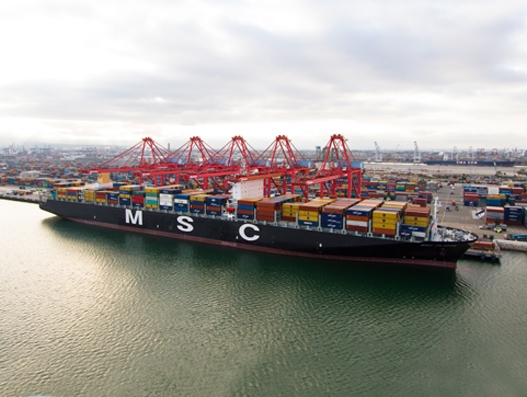
Port of Long Beach’s cargo traffic surges in January
<p style="text-align: justify;">Feb 10, 2017: Renewed activity at the Port of Long Beach’s largest terminal and extra ships calling ahead of the Lunar New Year pushed cargo 8.7 percent higher in January compared to the same month a year ago.</p> <p style="text-align: justify;">Dockworkers moved 582,689 twenty-foot equivalent units (TEUs) last month. Exports were strong, jumping […]

Feb 10, 2017: Renewed activity at the Port of Long Beach’s largest terminal and extra ships calling ahead of the Lunar New Year pushed cargo 8.7 percent higher in January compared to the same month a year ago.
Dockworkers moved 582,689 twenty-foot equivalent units (TEUs) last month. Exports were strong, jumping 10.8 percent year-over-year to 118,234 containers. Imports increased 7.4 percent to 298,990 TEUs, while empties sent back to the Far East rose 9.6 percent to 165,465.
Growth at terminals was led by the Port’s Pier T terminal, operated by Total Terminals International (TTI). The terminal is now controlled by Terminal Investment Limited (TIL), a subsidiary of Mediterranean Shipping (MSC), the world’s second-largest ocean carrier. MSC’s TIL purchased a majority stake in the terminal following the bankruptcy of Hanjin Shipping last year.
The month’s total container traffic growth was notable since TEU traffic in January 2016 jumped 25 percent from the same month in 2015.
“It was a tough benchmark, so we’re very happy with the way the new year is starting in Long Beach,” said Lori Ann Guzmán, president, Board of Harbor Commissioners.
“This year, we’ll be laser-focused on furthering our new partnership with MSC and continuing to provide efficient and rapid service to all of our customers.”
Duane Kenagy, Port of Long Beach’s Interim chief executive, said with new alliances beginning this spring, 2017 is expected to be a transition year for the industry.
“Long Beach stands ready to provide a dependable harbor as carriers adjust to new services, while we continue upgrading our berths and rail network to speed their cargo inland,” said Kenagy.

